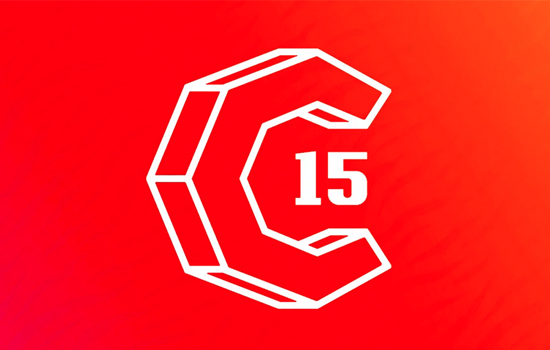You may have heard it said that blogging is dead.
No.
As far as I can tell, blogging is not only alive, but thriving. And if “blogging is dead” is some sort of call to make it so…
No.
Blogging offers something that the social graph doesn’t: discovery. By discovery, I mean the experience of finding something for the first time, by yourself. Even though it may not always feel differently, encountering information via social media is different. I would call it referral, not discovery. Someone else has discovered it for you, and by sharing the link, is saying, “hey, you should check this out, too.” That’s a referral.
Discovery, on the other hand, is when you respond to a desire for something and pursue it, or, in the process of pursuing something you want, instead encounter something you didn’t even know you wanted.
If, somehow, social media replaced blogging (and really, one could make an argument that blogging is social media, but I mean networks like Twitter, Google+, etc.), I think the ability for someone to experience the sort of discovery I described—pursuing ideas and finding them in content, or the serendipity of encountering entirely new things—might be lost or significantly depleted. Social networks are getting better at supporting deeper content, as Google+ is demonstrating, but they still work best by distributing information across existing social networks. In that system, the content you encounter is the content your friends encounter. If it’s new to you, it was brought to you by someone who isn’t new to you. But on the web, content is discoverable even if you or your friends have never found it before. That’s what search is all about. So until Google+ or some other network enables users to optimize their content for searching strangers, I think blogging still has a very important role to play.
(Really, that’s probably right around the corner, and when that happens I’ll probably be inclined to scrap the discovery argument and pick up one focused on the role design has in shaping the information experience.)
In the meantime, I’d like to share with you (this is a referral now) a few blogs that I think provide strong and very different examples of how blogging can be done. Now that I read back on this, it’s on a scale from formal to very informal:
1. Bat Bean Beam is what I might call slow-blogging. Giovanni Tiso has been writing long-form entries once a week (every Monday) for the last 3 years. In fact, his most recent post is reflecting upon that anniversary. This blog won’t teach you about design, marketing, or advertising, but it will enrich your mind so that you can bring a wider and deeper perspective on things to whatever it is you do. That’s why I read it. And by the way, I wish I could say I discovered this blog. I don’t remember by whom, but I know it was referred to me by another blogger I read regularly. That person linked to Giovanni’s post on a childhood favorite of mine—a book that truly shaped my idea for how working society should look—Richard Scarry’s What Do People Do All Day?
2. In very stark contrast, Toronto-based marketer Mitch Joel blogs every day. Each post is brief, and clearly not fussed over. But he’s found a rhythm. And in stark contrast with plenty of other social media quasi-celebrities (who will remain nameless), none of his entries feel superflous to me. In fact, though they rarely impart what I might call life-changing insights, they almost always get me to think. And, he’s also self-aware. His entries often address form, outward-processing how he does blogging and why. On that note, here he is talking about how blogging changed gatekeeping. Oh, and one more thing. I may skim most of his daily posts, but his weekly “Six Links Worthy of Your Attention” post is one I eagerly anticipate every weekend. Highly recommended.
3. UK planner Russell Davies blogs on his own mysterious schedule. That is, it seems, whenever he feels like it. Sometimes that means a few times in a week, other times much longer gaps come between posts. Like Joel, his posts are not showy at all. In fact, they’re so informal that they seem almost intimate—as if you’re reading a note-to-self or a brainstorming email he’s sent to a few colleagues. He tightens it up ever so slightly when he’s writing his Wired UK column, but what inspires me about Russell Davies is that his approach to blogging and column writing is almost as if to say that the writing itself is, if anything, a nuisance. The ideas are what count. I imagine he’d be the first I read to take up some form of mind-to-mind communication if it were possible.
So those are some examples you should be looking at right now.
To wrap things up, I’m going to be inflammatory just for fun:
Whoever told you blogging is dead:
- probably doesn’t read blogs
- definitely isn’t reading the right blogs
- probably never kept a blog long enough to learn to do it right
- probably doesn’t read much
- is probably in a constant state of distraction
- probably thinks Twitter is a fitting replacement (I like Twitter as much as the next guy, but honestly, most of the value of Twitter for me is in the amazing content that the people I follow point me to, which, as it happens, tends to be on…*gasp* blogs!)
- probably thinks Google+ is a fitting replacement (I also like Google+. In fact, I think it’s way cooler than Facebook. But for now, it’s not going do what blogging does best.)
- probably heard someone else say it and thought it sounded clever.
- is, imho, dead wrong.
Anyway, “blogging is dead” is so 2010. Blogging is not dead. Blogging-is-dead is dead.
I’m just sayin’.


